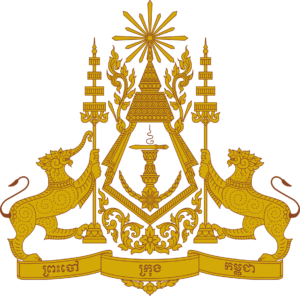Less than ten years are left to implement the Sustainable Development Goals (SDGs). Cambodia has drafted plans, like the Power Development Masterplan 2022-2040 and the National Energy Efficiency Plan, to achieve its energy SDGs and help equitable electricity distribution. However, despite the ambitious roadmap, it must address technical and investment hurdles.
If Cambodia is able to overcome the problem, an equitable access to energy would provide several benefits reducing poverty, expanding opportunities, and improving health, productivity and living standards.
One of the PDP scenarios predicts that coal’s domestic installed capacity in 2030 will be 2,266 megawatts (MW), accounting for 40.4% of the total mix. The capacity will stay unchanged in 2040, but its proportion will fall to 21.4% due to expansion in other sectors. Fuel oils will account for 490 MW in 2030 and 2040, while their percentage of the energy mix will be 8.7% and 4.6%, respectively.
Additionally, it is predicted that Cambodia’s imports from Laos and Thailand will total 3,095 MW and 700 MW, respectively, by 2030. By 2040, imports from Laos will be the same, but imports from Thailand will be increased to 1,000 MW. It will save around 1,215 MW of capacity through energy-saving measures in 2030, which will rise to 2,205 MW by 2040.
While Cambodia expanded its energy access from 6.6% in 2000 to 97.5% in 2021, it still has much to do to cover hundreds of villages. To deliver light to the last mile (the final stage in a process), the government immediately plans to connect approximately 170 villages to the national power grid over the next few years.
However, this leaves 180 off-grid village, many of which are home to Cambodia’s most vulnerable groups, including indigenous peoples and ethnic minorities, women, girls, children, youth, people with disabilities, the elderly, and displaced individuals. It will be difficult to reach them because these villages are dispersed and inaccessible, have no road access, and are frequently located in floating areas. Furthermore, simply connecting a village to the national grid is rarely sufficient because electrical availability, reliability, and cost remain difficult to achieve. Nearly two-thirds of the households connected to the grid have frequent power shortages.
How can India help?
India is a leading investor in renewable energy and a low-cost location for grid-connected solar power. The One, Sun, One World, One Grid program, supported by the International Solar Alliance (ISA), seeks ASEAN’s close involvement in its initial implementation phase. This has the potential to significantly contribute to the fight against global warming by creating a global grid capable of transmitting renewable energy from anywhere, at any time, while also lowering carbon emissions and energy prices. Cambodia and Myanmar are two of the ten ASEAN member states that have signed and ratified the ISA Framework Agreement.
India can help Cambodia to reduce power shortages and help to bring solar energy to remote villages by sharing insights in project management, financing and community engagement. Indian companies and professionals can support and train Cambodian engineers and technicians in developing and maintaining renewable energy infrastructure.
Additionally, India can facilitate Indian and Cambodian companies form partnerships to invest in renewable energy projects. Indian financial organisations may also provide loans or grants for such ventures. Moreover, India can provide financial aid to Cambodia to upgrade its electricity infrastructure to reduce wastage and loss in transmission. India can help to implement off-grid and mini-grid solutions in rural regions can give immediate relief from power outages and lessen dependency on traditional fossil fuel sources.
Overall, it is a perfect opportunity for Cambodia and India to collaborate and work on energy independence and focus more on renewable energies to mitigate the effect of climate change and global warming.
Related Posts

India Cambodia Tourism year 2024
INDIA CAMBODIA TOURISM YEAR 2024 The Embassy of Cambodia in India celebrated the Cambodia India Tourism Year and the Launch

FORUM FOR WOMEN ENTREPRENEUR
Forum for women entrepreneurs. His excellency Kartik Tallam spoke on business opportunities in cambodia at a forum for women entrepreneurs.


